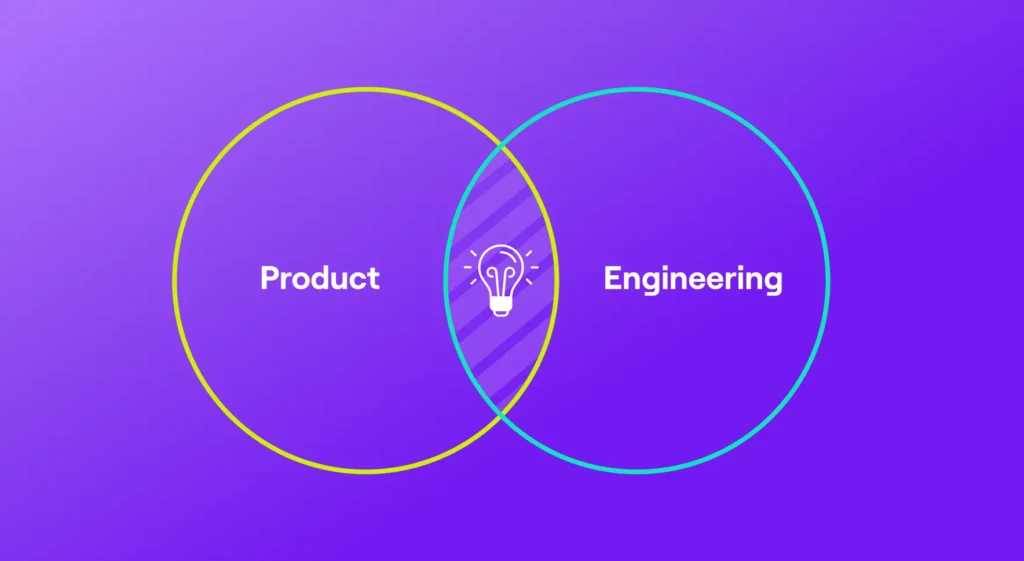We’ve discussed in previous posts how CEOs and board members ask questions during meetings. But what we haven’t acknowledged yet is that they’re not the only ones asking the questions during the big meetings. Questions like, “When is feature X coming out?” or “ Why aren’t we prioritizing this feature over that feature?” are more likely to come from your peers: the Head of Sales, Product, Marketing, Finance, etc.
So what’s the thinking behind their questions? Do they echo the same concerns of your CEO, or are their motivations different? Are they being passive-aggressive or literal? Let’s try to get in their headspace, and see if we can put ourselves in their shoes.
The Truth Behind Those Stakeholder Questions
At a macro-level, we all know that companies rely on our engineering teams to be the innovation engine, and this reality has a downstream impact on almost all other departments. We also make the thing they sell! In many ways, your team’s performance dictates the ease at which other departments can achieve their goals. For example, GTM teams have to plan for product launches. Sales needs new features to engage their accounts with. In short, these functions rely on engineering output, productivity and innovation, and that’s why they ask for these updates. And when they start feeling the pressures of their roles, you can count on them looking to engineering to help them out.
There’s also another important dynamic at play that should influence our answers to these questions. Stating the obvious, but your peers usually don’t have any sort of technical career experience. Because of this, concepts such as backlogs, burndown rates, technical debt, and fickle 10x coders 😉 is fundamentally lost on your peers. The challenge in answering these questions is bridging the gap between “the business” and “engineering” and educating our peers about how engineering teams work. There’s a translation between engineering and business terms that needs to happen so that your team understands your answers. This our job!
Let’s talk about the questions that we’re bound to get at some point. More importantly, let’s think through how do we get ahead of these questions, and answer them in a way that helps our peers.
Questions Asked By Your Executive Peers
When are we going to ship THAT feature? / Why can’t we get this feature out? <mumbles in their breadth>
What does this question mean?
This question often isn’t usually about that one feature. In many cases, your head of sales is signaling that they’re looking for some help. They’ll ask for more (or different) leads from marketing, but they’ll ask engineering for “that feature.” Maybe that feature will them re-engage a customer. It could be the key to helping them sell into a new customer, or up-selling on a current one. The bottom line is that in a similar vein as your Board, they want to ensure that your team is not getting stagnant. In many instances, they just want more new things to talk about with their customer base.
How to respond:
No mincing words, the only way to answer is to directly address what your team is working on, and what your priorities are. The only art is to make sure you speak to it in granularity and vocabulary that they understand. Frankly, your head of sales isn’t going to care about why something is getting refactored – they are going to care about uptime, or enabling more scale, or something that he or she can sell, or retain an existing customer.
You should be assessing if there mutual agreement on the priority list. If not, there’s a huge opportunity for you to better understand your sales leader’s perspective. At the least, it will help you navigate the next conversation because you’ll know what he or she cares about. Are they not fully understanding the value of the infrastructure work that your team is trying to finish? Is there competitive or market intelligence that’s creating a new sense of urgency around certain feature work?
Don’t forget, your Head of Product can be your best friend during these types of conversations. Don’t be afraid to bring them in to help navigate this conversation. When done right, they’ll organically supplement the rationale for your team’s current work priorities.
When are we going to ship that thing I saw in the Hackathon?
What does this question mean?
Your sales team gets excited when they see a preliminary version or concept of a new feature whether or not it solves their most important problem. Your engineering team probably does too! Frankly though, often businesses are just happy to see stuff that they might sell or might not be able to sell; it’s really no cost to them. It might speak to hunger or latent passive frustration at the rate of feature delivery – things they can sell.
How to respond:
First, we should all be taking moments to share excitement for these ideas. Unfortunately, in this situation, you need to temper that excitement with rationale planning. Similar to the way you’d answer the previous question, it’s important to stack rank this idea against current team priorities. Again, your Head of Product can back you up here in this conversation. But even if this were to become higher priority work, something else has to give. You could also reiterate that could be (and likely will be) unforeseen complexities as you build this past the basic concept demo but, most business folks expect this response to any request – this will probably fall on deaf ears.
The punchline though is that your openness to discuss roadmap priorities will be welcomed. To the Head of Sales, it shows that you are responsive, open to change, and a collaborative partner in moving the business forward.
Do you REALLY need that budget line item?
What does this mean?
When it comes time to talk about budget, finance examines ALL teams and ALL line items. It’s their job to work with all teams to discern the “nice-to-haves” from the “must-haves,” and it’s even more important that they do this with the company’s biggest line item: R&D. It’s not intentional, but they NEED to ask the question before they allow for serious spend in cash flow.
How to respond:
The short answer is that every budget line item should have a strong rationale for existing, whether or not your Head of Finance asks. When you become an executive leader, it becomes our responsibility to make sure that our business is investing in areas that will drive growth. Engineering leaders that lean into this part of the role are drastically helping the business. Long story short, before finance ever asks, we should do our part in making sure that the value of each line item is crystal clear o non-technical audiences.
This is not to say that you should be so scrutinous that you don’t hire that team you need. If you need that team to build that feature that the business is expecting, the one that will put
Going into this question, it’s important that you ALWAYS submit the full wish list that will ensure you achieve your goals, fully expecting that there will be a negotiation. The follow-up question is always, “Do you really need this?” or, “Do we need to hire a whole new team to work on that?”
The short answer: YES, you do! Remember, your CEO and Board are always going to ask your team for MORE. “More innovation, more features!” They won’t normally consider that you need to hire a whole new team to get that done. Delays happen even when you DO hire that team, so there’s no need to make it tougher on yourself. Your executive peers are probably not going to remember (or care) that you did not secure that team because finance pushed back. Even factoring in engineer ramp time, not receiving those resources will always hinder your team’s ability to deliver on the business’s strategic objectives in the long-term.






